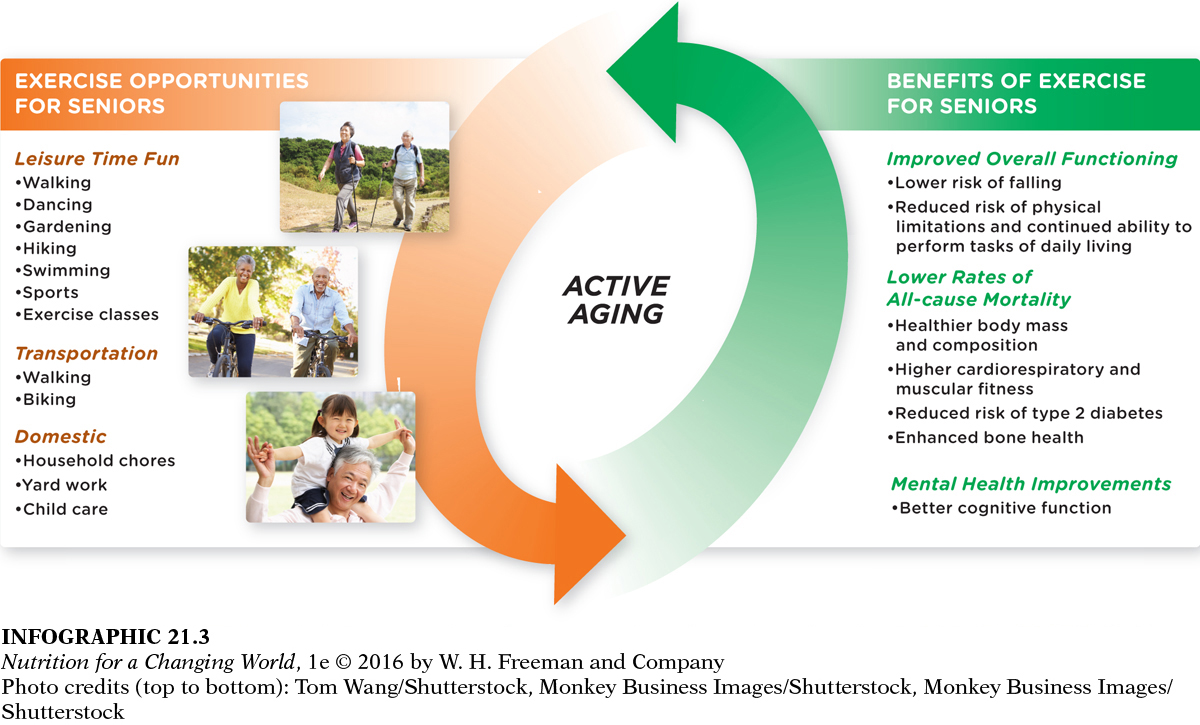ENERGY NEEDS AND PHYSICAL ACTIVITY
498
Results of epidemiological research like the Adventist studies show that nutrition plays a key role in maintaining the health of the aging adult, and therefore in determining longevity and quality of life. For the most part, the nutritional needs of healthy older adults (51 years and older) are similar to those of healthy adults of younger ages, but there are a few key ways in which their nutritional needs differ. The most important one involves energy (caloric) needs.
SARCOPENIA age-related reduction in skeletal muscle mass
As people age, they require fewer calories to maintain their weight and power their activities. That’s because total and resting energy expenditure decrease progressively with age. There are several contributing factors to this decline, but the biggest one is a decrease in physical activity—older adults are less physically active than younger folks. In turn, this reduced activity leads to reduced muscle mass, a phenomenon called sarcopenia, which further reduces resting energy expenditure (since muscle burns more calories than fat; see Chapter 15). Some of the changes in muscle mass that occur with aging are independent of activity levels, and relate to changes in hormone levels and cellular aging, both of which lead to predictable age-related changes in body composition and body fat distribution. But to a large extent, physical activity can offset losses in muscle mass. (INFOGRAPHIC 21.3)

Question 21.3
 What difficulties could prevent seniors from being physically active and how can these difficulties be overcome?
What difficulties could prevent seniors from being physically active and how can these difficulties be overcome?
Seniors can be active at any age. Mobility problems from arthritis or injury do not need to prevent activity. Aerobic, strengthening, and stretching exercises can all be modified to meet individual needs. For example, an individual with balance problems may participate in a senior water aerobics class, or complete an instructor-led exercise program designed to build balance skills.
Older adults need fewer calories to meet their typical energy expenditure, but their need for specific macro- and micronutrients does not decrease (and may even increase because of other bodily changes). As a consequence, older adults must make sure to consume a diet that is more nutritionally dense than the diet they may have eaten when they were younger. There is less room for empty calories.